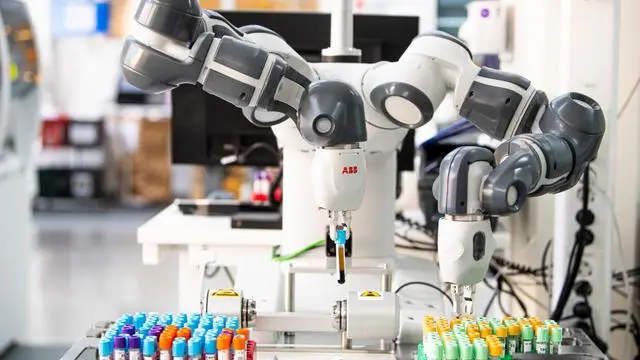News Details
ABB robots step out of the factory, targeting business opportunities in China's biopharmaceutical research and development and medical fields.
Release time:
2023-11-01 00:00
More and more robots will move out of factory production lines and into biopharmaceutical laboratories, hospitals, and even to the side of patients to take on roles.

More and more robots will step out of factory production lines and into biopharmaceutical laboratories, hospitals, and even beside patients to 'take up their posts.' ABB Group, a Swiss industrial giant and one of the world's four major robotics companies, recently opened its robotics empowerment center focused on life sciences and the medical industry in Zhangjiang Robot Valley, Shanghai. This is ABB's further investment in China's automation market after spending over 1 billion yuan to build a robot super factory in Shanghai.
China is not only the largest and fastest-growing robot market in the world but is also becoming the largest healthcare market globally. 'The continuous development of industrial robots and artificial intelligence technology provides more opportunities for automation in the life sciences and healthcare industry,' said Massimo Carboni, global president of ABB's robotics business, at the opening ceremony of the empowerment center. The inherent high efficiency, high precision, and infection resistance of intelligent robots can help alleviate many challenges brought about by the shortage of high-level medical talent. Through automation and digitalization, the healthcare industry can not only improve efficiency and simplify processes but also achieve more robust and agile operations.
Related News
What are the typical application scenarios of industrial robots?
Automobile manufacturing: Industrial robots are widely used in the automobile manufacturing process, including tasks such as welding, assembly, painting, dispensing, and inspection.
What are the operating procedures and precautions for welding robots?
A welding robot is an industrial robot that has welding programs preset in its control system, allowing the robot to automatically complete welding tasks.
What are the classifications of welding robots?
The types of welding robots are divided into spot welding robots, arc welding robots, laser welding robots, etc. The most common ones in the market are spot welding robots and arc welding robots.
Current status and development trends of welding robots!
Welding robots are robots that can autonomously perform welding tasks, and they play a crucial role in industrial production.












